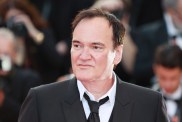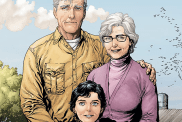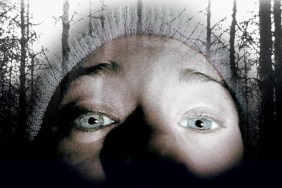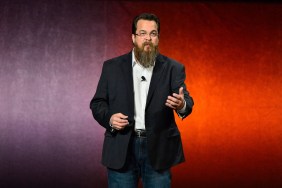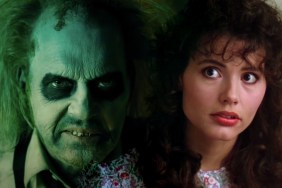
Adapted from the cult 1983 novel by Susan Hill, it’s a traditional Victorian Ghost story in which Radcliffe’s Arthur Kipps, a young lawyer who recently lost his wife, is sent to settle the affairs of an estate that may be haunted by a vengeful spirit. The movie co-stars the great Ciarán Hinds (There Will Be Blood) and Janet McTeer (Albert Nobbs).
Radcliffe took the time to sit down with us in New York to discuss his thoughts on horror, the Hammer Films legacy, what really scares him, and his future role as beat poet Allen Ginsberg.
What did you enjoy most about stepping back into that time period?
Daniel Radcliffe: On a completely superficial level, the costumes. If I could wear that stuff all the time I really would. When you put that on you stand differently, it ages you slightly so it was quite helpful to me in that effort. What’s great about that period is that it came in a time when the English had 5000 years of being a completely pagan nation, we fell out of love with any kind of spirituality as soon as Christianity came in. In that period, the Victorian era, England started to come around to the idea of spirits and demons and the notion of their being a potential to transcend the real world and the afterlife. That idea was very prominent at that time so it’s very useful in telling ghost stories.
This is a Hammer Film in the tradition of English horror and Christopher Lee/Peter Cushing. Were you trying to pay tribute to that in your performance?
Radcliffe: Absolutely. Peter Cushing was the still center of all those films around which all the rest of that chaos could develop. So yes I was, if not actually paying tribute, I was certainly aware that had this film been made at a different time Peter Cushing would have got the part. The Hammer banner is wonderful, and it’s a fantastic thing for me particularly because having been in the British film industry all my life if you’re not working with people who actually worked on the films you’re working with their kids. So, the person who did all my make-up on the “Potter” movies, her dad, Eddie Knight, did all the original Hammer make-ups. Growing up in the industry in England you’re always very aware of those films and the importance they had and what they did for the industry. Them and also the Ealing comedies gave England a confidence in filmmaking they didn’t have before, it seems to me anyway, on a commercial level. Also it’s great because we can push the horror thing a little more. We can go back to old standards like creepy toys and a haunted house and all those kind of things that recur, and because it’s Hammer nobody questions it because it feels right within the frame of the film. It’s a film of two halves. The first 45 minutes we were looking at films like The Others and The Orphanage in terms of the tone, then after that it gets a lot more bombastic. Once we get into the house it’s just James playing with the audience. He worked out so many of those scares and knew he could just take over from there.
It’s like a carnival spook house.
Radcliffe: Yeah, it is!
There are scares in the film that are fake-outs, “Oh, it’s a bird,” and there are ones where you go “Oh s**t!” When you saw the final cut which one made you go, “Oh s**t”?
Radcliffe: I love all the stupid fake ones at the beginning. It’s the waterpipe and then the bird twice in one scene. That’s James Watkins going, “Yeah, I can do a scare like that, and I’ll be doing them whenever I like over the next hour-and-a-half!” What scared me the most was the hand going up to the window and the face appears, that was one I knew was there and it still got me. I’d completely forgotten about it.

Your belief in ghosts…?
Radcliffe: Is non-existent, I’m afraid. (laughs) I don’t have any belief in ghosts or the supernatural or anything like that, unfortunately.
It’s interesting because your character is vacillating back-and-forth between this guy who has to get this job done with the paperwork and also questioning the realities of whether the supernatural realm exists.
Radcliffe: Absolutely. One of the first questions I asked James when I met him is, “Why does he stay there?” The moment you read the first page you know it’ll end badly, like, “Get out of there you idiot!” There’s that great line where I say, “Oh it’s fine, I’ll just work through the night.” And you think… (laughs) But James said this was a young man who lost his wife and starts seeing what he thinks is the ghost of a dead woman. To have any confirmation that that is what he’s seeing would mean that there is an afterlife and he will one day see his wife again. So, he’s staying there for some sense of consolation, I suppose.
So you don’t believe in the supernatural, so we know you’re not Shirley MacLaine
Radcliffe: (laughs)
BUT, in all horror movies there’s always a subtext going on, something beyond just the surface. What was the subtext of this film that appealed to you, made you want to take the part?
Radcliffe: That was one of the things I loved about it, that it felt unusual for the genre. It was a horror film, unashamedly, but is character-driven and, yes, does have some really strong themes. For me the film is about what happens to us when you can’t move on from a loss. Arthur is someone who is devastated by his loss, has become completely disconnected from the world, from his son, from his life. The woman in black has had a terrible wrong done to her during her life and has been unable to move on from that and has been consumed by grief and rage and has carried that desire for revenge into the afterlife with her. Then there’s the Fisher’s marriage, which has all gone wrong. The fact that Ciarán is in denial and Janet is having visions, everybody is reacting to grief in a different way in this film. If you like the battle in the film between Arthur and the woman in black it’s a fight for closure, who can move on first.
They’re two sides of the same coin.
Radcliffe: Yes, absolutely. They’re the two most extreme reactions to a death.
Can you talk a little bit about Ciarán because the director said he immediately envisioned him in the role.
Radcliffe: It’s so funny, when me and James first met Ciarán Hinds was at the top of both our lists to play Sam Daily.
And this was before or after “Deathly Hallows”?
Radcliffe: It was after, I’d just worked with him.
Would you consider yourself a fan of horror films?

What are you looking the most forward to when you play Allen Ginsberg in “Kill Your Darlings”?
Radcliffe: What’s been wonderful so far has been doing all the research. It’s been great looking into his childhood, his life. I’m reading the journals at the moment, and I’m about to read the biography. It’s fantastic. He’s obviously an extremely interesting character. What’s interesting about him is in his life he was more or less the most placatory person you could ever have met. He was all about trying to keep peace and keep any situation calm and not upset people. His mother had a deep personality disorder so he was at home a lot of the time as a kid just trying to make sure everything was okay. That’s how he was, which is why it’s intriguing he was so confrontational in his poetry. It was that side that could never come out in any natural social interaction was suddenly able to be unleashed. One of the things I’m looking forward to is just working with the director John Krokidas, I think he’s going to make a fantastic movie.
You have a dialect coach yet?
Radcliffe: Oh yeah, I’m working on my New Jersey Jew at the moment. (laughs)
The Woman In Black opens everywhere Friday, February 3rd. Follow this link for videos, images and more!
